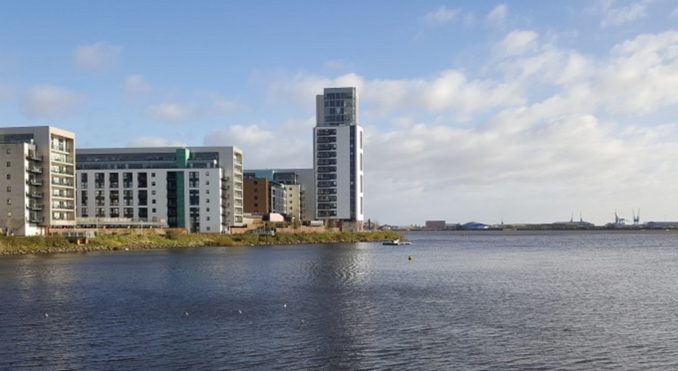
You may think this is lazy writing and cheating somewhat as I live in Cardiff. And you would be absolutely right. But that doesn’t mean this isn’t an interesting walk and a good place to visit. The redevelopment of Cardiff Bay is in my opinion the single biggest positive change I have seen in the city during my lifetime. As a kid in the 90s we occasionally visited. If the tide was in you could look upon the waters. If it was out then there was simply a large expanse of mud flats.
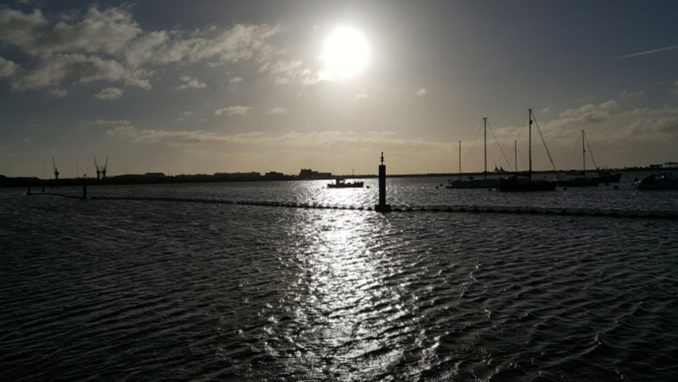
The docks area was run down and the surrounding residential areas were something of an early no go zone. They were and are highly enriched. Train lines to the bay were ramshackle and service poor. The city was almost cut off from its bay area. Cardiff had at one point been the busiest port in the world. Coal was exported across the Empire. The city and the population expanded. But after WW2 trade and the coal industry began to shrink. Large areas of the docks became derelict and an eyesore.

Then along came Margaret Thatcher, the last conservative Prime Minister of Great Britain. Along with lord Crickhowell she launched the Cardiff Bay Development Corporation in 1987. Its mission statement was:
“To put Cardiff on the international map as a superlative maritime city which will stand comparison with any such city in the world, thereby enhancing the image and economic well-being of Cardiff and Wales as a whole.” –Wikipedia
The five main aims and objectives were:
- To promote development and provide a superb environment in which people will want to live, work and play.
- To re-unite the City of Cardiff with its waterfront.
- To bring forward a mix of development which would create a wide range of job opportunities and would reflect the hopes and aspirations of the communities of the area.
- To achieve the highest standard of design and quality in all types of development and investment.
- To establish the area as a recognized centre of excellence and innovation in the field of urban regeneration.
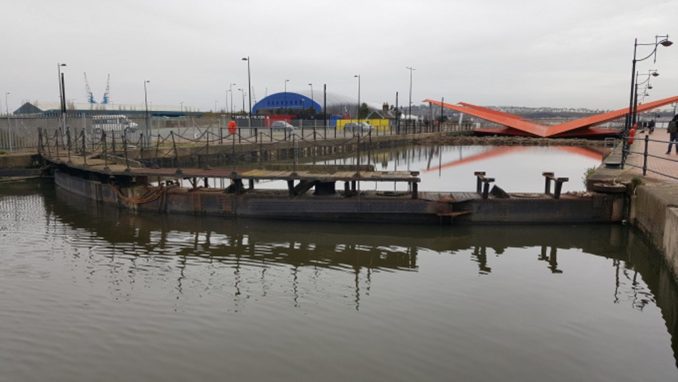
The CBDC was chiefly responsible for building the Cardiff Bay Barrage, the new shopping and housing developments across the old docks in the 1990s and the Roald Dahl Plass development. The Development Corporation aimed to attract private capital by spending public money to improve the area. Despite opposition by environmentalists and wildlife organisations, the mudflats at the mouths of the River Taff and River Ely were inundated, with loss of habitat for wading birds. The Barrage has created several new habitats for freshwater species with the wetlands to the south of the Hamadryad Park.
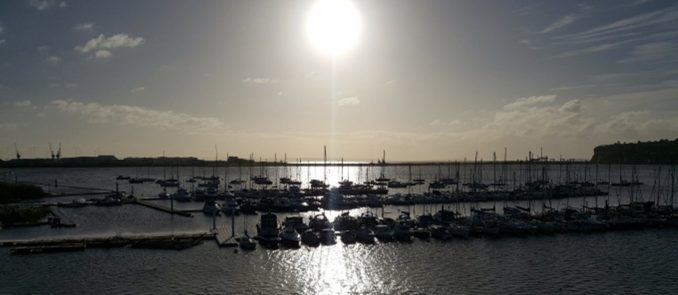
When the Development Corporation was wound up in on 31 March 2000, it had achieved many of its objectives. The whole area was unrecognisable from ten years before. Much private land was now open to the public, particularly around the inner harbour and the north side of Roath basin. In addition, the development has enabled land in the city centre to be redeveloped for higher-value uses. The development was achieved with a mix of public and private finance. –Wikipedia

You can now walk a circuit around Cardiff bay thanks to a combination of the Barrage, the Wales coastal path and Cardiff bay loop path. Routes vary slightly but it’s usually between 5-6 miles. The route is generally well signposted.You can start on the barrage itself where there is a car park. Or park at Mermaid Quay and go from there. It is a joy to walk around when the weather is good, but it can get very busy.

There are often joggers and other walkers along the route as well as cyclists on the Barrage. There are plenty of sights to see. I have listed some below and shamelessly used Wikipedia to save myself hours of research. This is by no means an exhaustive list. There are shops, restaurants, pubs, marinas, sailing clubs, a white water centre, parklands, new housing developments, many flats (thousands of flats), exercise equipment, The Senedd, Techniquest, old dock areas, water taxis, etc the list goes on.
The Barrage

The Barrage has played an important role in the regeneration of the area. Attractions such as the Wales Millennium Centre, the National Assembly for Wales, shopping and watersports have since moved onto the waterfront. In 2000 the Cardiff Bay Development Corporation was dissolved, and the Welsh Assembly awarded a contract to Cardiff County Council to manage the barrage, as Cardiff Harbour Authority (CHA). One of the major selling points of the proposed development was the opening up of a new pedestrian and cycle route across the barrage. This would not only enhance tourism on both sides but provide a pleasant and safe short-cut between Cardiff and Penarth, cutting two miles off the journey otherwise taken on the heavy-traffic roads further upstream. However, this benefit took years to materialise due to a lack of agreement between the derelict access land owners (Associated British Ports) and Cardiff Council.
— Jonathon Davies (@JonD99) May 10, 2018
The “unfinished” barrage was the cause of much embarrassment to the Welsh Assembly. Cardiff Harbour Authority made significant progress in the creation of the bay edge walkway and have redeveloped a large portion of the previously inaccessible bay periphery and the bay edge walkway was finally completed and open to the public on Monday 30 June 2008, allowing public access from Mermaid Quay to Penarth Marina. The CHA has developed a Sea Angling zone on the outer breakwater arm. The Cardiff Bay Barrage has won awards as a feat of engineering from the British Construction Industry and achieved the Institution of Civil Engineers Brunel Medal. –Wikipedia
The Wetlands Reserve
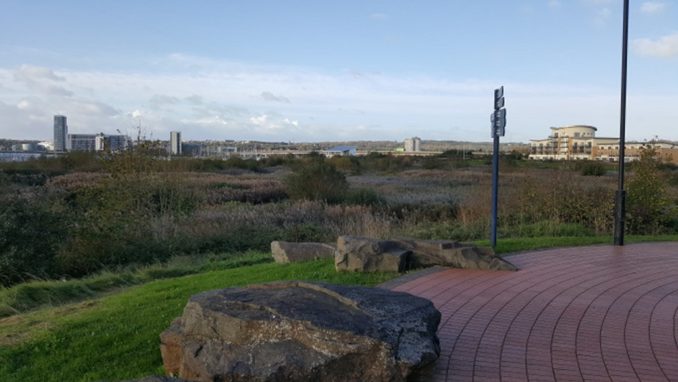
Wetlands are a transitional habitat between water and land; they provide an important habitat for many bird, fish, animal, and plant species.
The Cardiff Bay Wetlands Reserve can be found near St David’s Hotel close to Mermaid Quay. Prior to the construction of the Cardiff Bay Barrage, this area was made up of mudflats and salt marsh. The wetlands reserve was created in the new freshwater lake.The reserve is a biodiversity hot-spot within Cardiff Bay. The reedbed, a UK Biodiversity Action Plan habitat, along with other aquatic plants, are very productive vegetation.

A number of bird species including reed buntings, reed warblers, and sedge warblers, use this habitat in which to build nests. Reedbed is not only important for birds, but also for invertebrates, fish, and amphibians. Interesting birds and wildlife can be seen here – not only in the summer, but year-round. The types of birds and their activity level will vary depending on the season. In the spring, when some birds breed on the Reserve, birds can be seen and heard singing – especially early in the morning. The autumn and winter bring visitors like teal and stonechat. –Wikipedia
Mermaid Quay

Mermaid Quay was at the centre of the regeneration of the Bay by the Cardiff Bay Development Corporation (CBDC). Part of the British Government’s Urban Development Programme to regenerate deprived and run-down inner city areas. The CBDC was set up in April 1987 to regenerate 1,100 hectares of derelict docklands of Cardiff and Penarth – once the world’s largest coal exporting port – to create Europe’s largest waterfront development. The Welsh Industrial & Maritime Museum, which held exhibits illustrating the industrial and maritime history of Wales, was demolished to make way for the development.
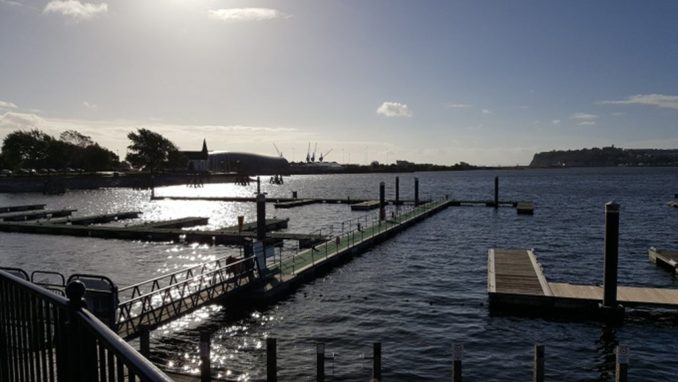
The collection was saved, but the majority remains in storage at Nant Garw with only a limited few items on display at the National Waterfront Museum in Swansea. Before the completion of the Cardiff Bay Barrage in 1999, Cardiff Bay was tidal, with extensive expanses of mud flats exposed at low tide. Construction of the barrage, one of the largest engineering projects in Europe, has turned Cardiff Bay into a 500-acre (2.0 km2) freshwater lake with 8 miles (13 km) of waterfront.Mermaid Quay was designed by architects Benoy and opened in August 1999. Since that time there has been vast regeneration of the Bay including the construction of Lloyd George Avenue – a new link road between the city centre and the Bay – numerous iconic buildings, and residential and commercial developments including Mermaid Quay. Cardiff Bay is now one of the top destinations in Wales attracting a range of visitors from South Wales day-trippers to tourists from around the globe. –Wikipedia
Penarth Marina
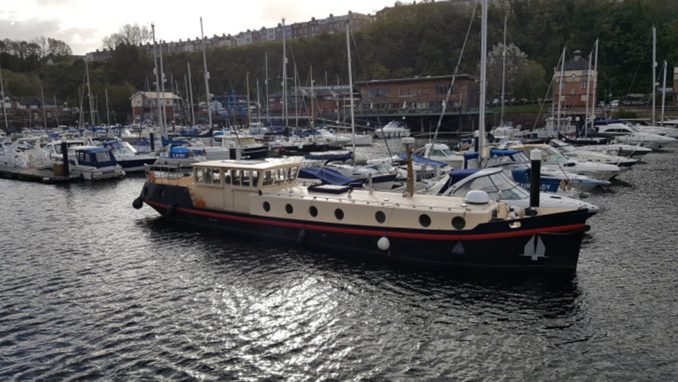
The old Penarth Dock closed in 1963. Some of its basins were earmarked to be filled with household refuse, while others were to be redeveloped for housing and a marina for leisure boats. A new yacht lock was built at the entrance in 1986 and the new marina was opened in 1987. It has a boatyard and over 300 berths for yachts and small boats.

In 1999 the construction of the Cardiff Bay Barrage was completed, which meant Penarth Marina improving the safety of the marina environment facing Cardiff Bay. Old Victorian dock buildings, located between the marina and Cardiff Bay Barrage are being converted for leisure use. The Old Custom House on Dock Road has been converted into restaurants, El Puerto and La Marina. The adjacent Grade II-listed Marine Buildings, built in 1865, were expected to be converted into a hotel. –Wikipedia
The Norwegian Church
Despite having a Norwegian church, Cardiff has yet to experience a terror attack (this is an in joke for regular blog readers). In the 19th century, Cardiff was one of Britain’s three major ports, along with London and Liverpool. The Norwegian merchant fleet at the time was the third largest in the world, and Cardiff became one of the major centres of its operations. Sjømannskirken – the Norwegian Church Abroad organisation, which is part of the Church of Norway – followed in its footsteps. Under Carl Herman Lund from Oslo, a Church was built in 1868 in Cardiff Bay between the East and West Docks on land donated by the Marquis of Bute, to serve the religious needs of Norwegian sailors and expatriates. Consecrated in December 1868, the church was clad in iron sheets on the instruction of the harbourmaster, to allow it to be moved if necessary. Known until this point as the Norwegian Iron Church, it now became known as the Little White Church, and became a welcome home point for sailors. Resultantly, and open to all sailors as a mission offering food and shelter, between 1867 and 1915 the number of visiting sailors to the church rose from 7,572 to 73,580 seamen per annum.

The writer Roald Dahl, who was born in Cardiff to Norwegian parents, was baptised in the church, as were his sisters. The family worshipped in the church. Throughout his life Dahl had ties with the church and in the 1970s when the church first fell into a state of disrepair, Dahl was at the forefront of a campaign to raise money to save it. This led to Dahl being appointed the first president of The Norwegian Church Preservation Trust after it was set up in 1987 by the church. A room in the church is named ‘The Dahl Gallery’, in memory of Dahl and to commemorate what he did for the church.
As well as this honour, Dahl is also celebrated yearly in September, the month of his 1916 birth. In 2016 Cardiff Bay celebrated the centenary of Dahl’s birth, with a project launched by The Norwegian Church.-Wikipedia

Photo by James West on Flickr
In 2006 the Norwegian Church Preservation Trust was transferred to Cardiff County Council, under the management of the Cardiff Harbour Authority. The building is now used as an arts centre, and is known as the Norwegian Church Arts Centre. The centre includes a café and an art gallery. In May 2011 the church underwent a £500,000 refurbishment, including a new outdoor terrace and a DDA compliant lift. The Greig room hosts a diversity of local arts and culture.-Wikipedia
Queen Alexandria Dock
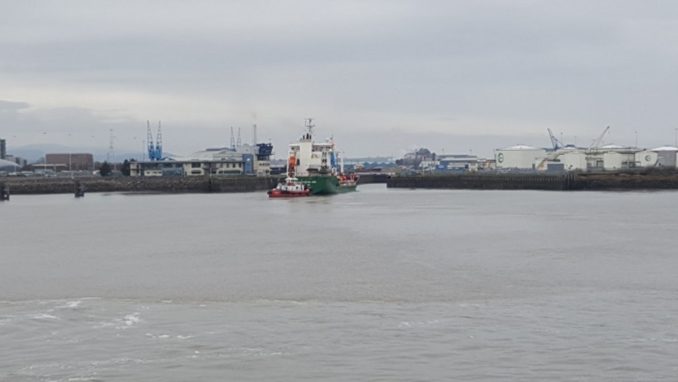
Cardiff now has three operational docks capable of handling ships of up to 35,000 tons deadweight: Queen Alexandra Dock, Roath Dock and Roath Basin. Although still owned by the port, Roath Basin is now only used as a hospitality berth, and is only accessible by vessels via Roath Dock. The port has transit sheds with nearly 40,000 m2(430,000 sq ft) of indoor storage plus 22.9 ha (57 acres) of open storage. There are 7 quayside cranes plus a range of mobile cranes. Cardiff’s specialised facilities include a distribution terminal and chill and cold storage for perishables. -Wikipedia
The Pierhead Building
The Grade One listed Pierhead building was built in 1897 and designed by the English architect William Frame. It was a replacement for the headquarters of the Bute Dock Company which burnt down in 1892. Frame’s mentor was William Burges, with whom Frame worked on the rebuilding of Cardiff Castle and Castell Coch until Burges’s death in 1881. The Bute Dock Company was renamed the Cardiff Railway Company in 1897. A coat of arms on the building’s façade bears the company’s motto “wrth ddŵr a thân” (by water and fire) encapsulating the elements creating the steam power which transformed Wales.
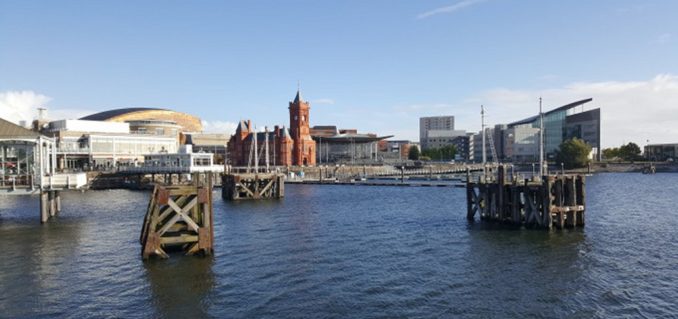
The Pierhead became the administrative office for the Port of Cardiff in 1947. The 1897 clock mechanism, by William Potts & Sons of Leeds, was removed, being replaced with an electronic motor, and auctioned off by British Rail and sold to an American collector in 1973. It was returned to Cardiff in 2005 and, in 2011 was restored by Smith of Derby Group and installed as a piece of contemporary art created by artist Marianne Forrest in Cardiff city centre. –Wikipedia
The Senedd

The Senedd (Senate or Parliament), also known as the National (or Welsh) Assembly building, houses the debating chamber and three committee rooms for the National Assembly for Wales in Cardiff. The 5,308 square metres (57,100 sq ft) Senedd building was opened by Queen Elizabeth II on 1 March 2006 and the total cost was £69.6 million, which included £49.7M in construction costs. The Senedd is part of the National Assembly estate that includes Tŷ Hywel and the Pierhead Building. -Wikipedia
The Wales Millennium Centre
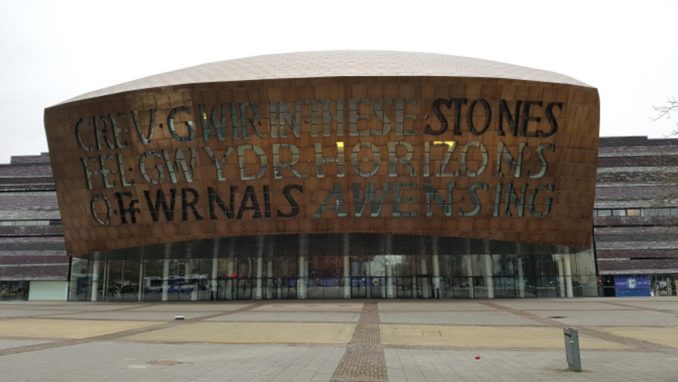
Wales Millennium Centre (Welsh: Canolfan Mileniwm Cymru) is an arts centre located in the Cardiff Bay area of Cardiff, Wales. The site covers a total area of 4.7 acres (1.9 ha). Phase 1 of the building was opened during the weekend of the 26–28 November 2004 and phase 2 opened on 22 January 2009 with an inaugural concert. The centre has hosted performances of Opera, ballet, Dance, Theatre comedy and Musicals. The Centre comprises one large theatre and two smaller halls with shops, bars and restaurants. It houses the national orchestra and opera, dance, theatre and literature companies, a total of eight arts organisations in residence. It is also home to the Cardiff Bay Visitor Centre.-Wikipedia
The Scott Memorial
In response to an initiative by the British Antarctic Heritage Trust to commemorate the 100th anniversary of the ‘Age of Antarctic Discovery’, the Captain Scott Society, in conjunction with the South Wales Echo, launched a prize for a sculpture to be erected in Cardiff Bay. The winner was Cardiff based sculptor, Jonathan Williams. The monument is surfaced in an irregular mosaic of white and near-white tiles that evoke the desolation and grandeur of the Antarctic ice. The design represents Scott, man-hauling South towards the Pole while the faces of his colleagues can be seen trapped in the snow. The northern end of the statue reveals the foresails of the expedition’s vessel, the Terra Nova. An enigmatic cavern that pierces the structure represents the ice cave so vividly depicted in Ponting’s photographs of the expedition. The monument stands on a compass rose and is located between the Norwegian Church and the lock through which the Terra Nova emerged on its fateful journey South. The proximity to the little Church, originally built for use by Norwegian seamen, is a poignant reminder that Scott was beaten to the Pole by the Norwegian explorer, Roald Amundsen. The church is now deconsecrated and has been a fitting venue for Captain Scott Society functions–captainscottsociety.com
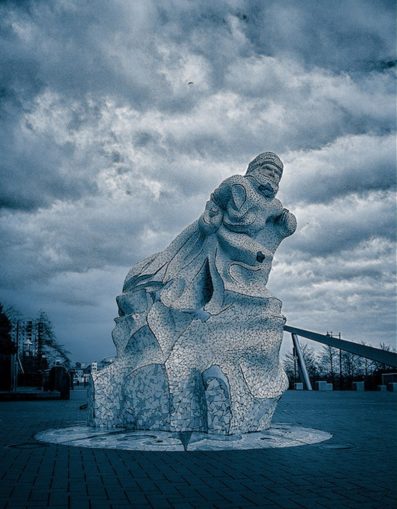
Photo by Dave Griffiths on Flickr
Robert Falcon Scott, CVO, RN (6 June 1868 – 29 March 1912) was a British Royal Navy officer and explorer who led two expeditions to the Antarctic regions: the Discovery Expedition (1901–1904) and the ill-fated Terra Nova Expedition (1910–1913). On the first expedition, he set a new southern record by marching to latitude 82°S and discovered the Polar (Antarctic) Plateau, on which the South Pole is located. On the second venture, Scott led a party of five which reached the South Pole on 17 January 1912, less than five weeks after Roald Amundsen’s Norwegian expedition. On their return journey, Scott’s party discovered plant fossils, proving Antarctica was once forested and joined to other continents. A planned meeting with supporting dog teams from the base camp failed, despite Scott’s written instructions, and at a distance of 150 miles from their base camp and 11 miles from the next depot, Scott and his companions perished. Scott set sail on the Terra Nova expedition from Cardiff.-Wikipedia
Merchant Seafarers War Memorial

Many merchant seamen sailed from Cardiff and were involved in numerous conflicts. King George V bestowed the title of the “Merchant Navy” on the British merchant shipping fleets following their service in the First World War; since then a number of other nations have also adopted use of that title or the similar “Merchant Marine.” In 1939 The British Empire had the largest merchant navy in the world. Further conflicts include World War Two and the Falklands War, all saw seamen from Cardiff, or sailing from Cardiff, involved and sadly losing their lives. -Wikipedia
© Jonathon Davies 2018
(Information from both Wikipedia and attributed photos from Flickr under the Creative Commons licences. All other photos by © Jonathon Davies.)
Audio file


